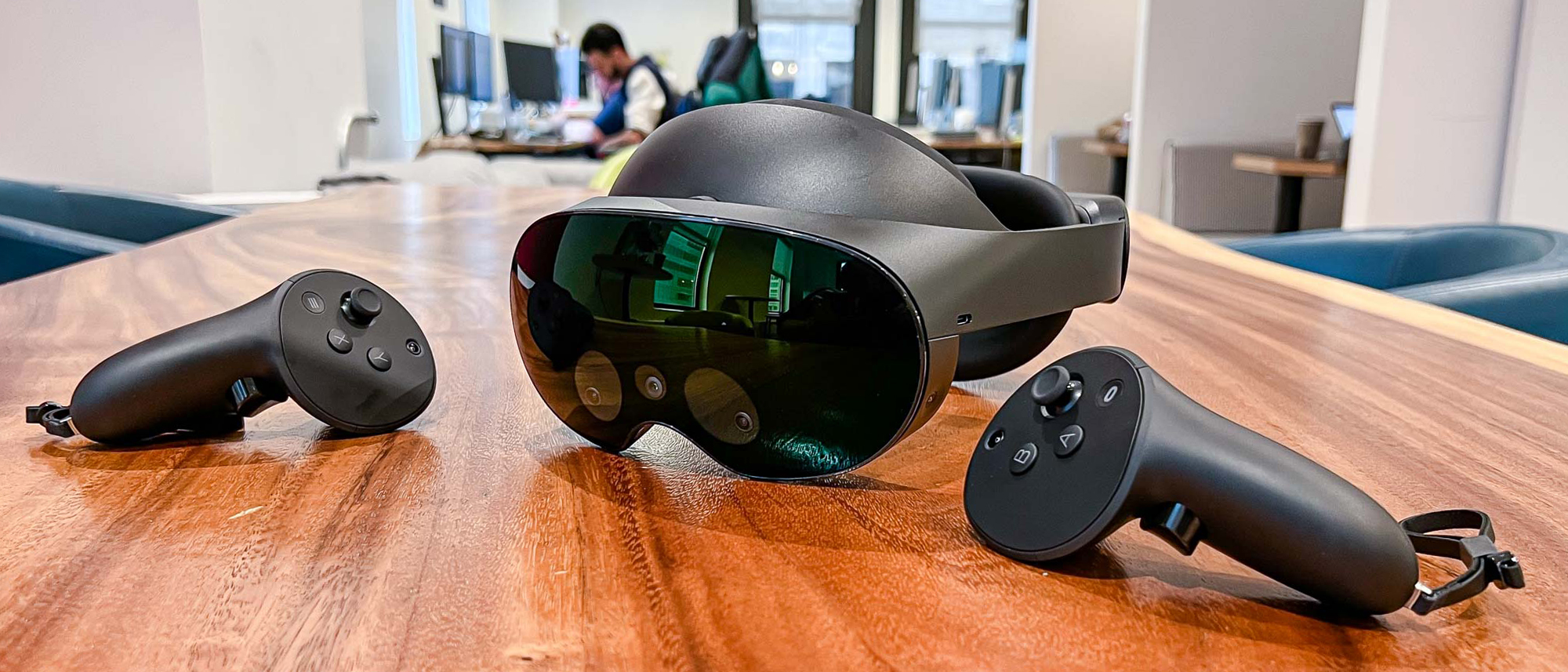Tom's Guide Verdict
The Meta Quest Pro is a powerful VR headset meant to facilitate working in the metaverse. But despite its impressive features, it's far too expensive and not necessary for most people.
Pros
- +
Comfortable to wear
- +
Doesn't isolate you from the real world
- +
Convincing spatial audio
Cons
- -
Very expensive
- -
Short battery life
- -
Working in VR is still unintuitive
Why you can trust Tom's Guide
The Meta Quest Pro may not be the best VR headset we've ever tested — that title belongs to the more affordable Meta Quest 3, with Apple Vision Pro coming in a close second. But if you're a mixed reality power user, the continually tumbling price does make this a solid choice
Professionals, scientists and creatives can make the most of this tool for online collaboration in real-time. If you fit into that niche, you'll love it. Its mixed reality features really helped jumpstart a shift away from pure VR we see in the Quest 3.
After spending some time going hands-on (or in this case, heads-on) with the Quest Pro I've seen the device’s potential firsthand. Even in a relatively brief amount of time, it's clear why being in a virtual office and collaborating with virtual representations of your colleagues could be appealing. Some people may even prefer meeting in the virtual world rather than being a talking head in a box on video calling apps like Skype or Google Meet.
But currently, most people haven't made the switch to working in the metaverse. That means if you want to work in VR, you are going to be an early adopter and may not find it lives up to its full potential. That's a big ask when the headset costs $1,499 (note: The Meta Quest Pro is now $999) rather than the $499 price point for the Quest 3. And frankly, it may be too big an ask for most people. Read on to find out why.
Meta Quest Pro review: Specs
| Header Cell - Column 0 | Meta Quest Pro |
|---|---|
| Chipset | Qualcomm Snapdragon XR2+ |
| Display resolution | 1832 x 1920 per eye |
| Storage | 256GB |
| RAM | 12GB |
| Battery life | 2-3 hours (rated) |
| Size | 10.3 x 7.1 x 5.0 |
| Weight | 1.59 pounds |
Meta Quest Pro review: Price and availability
- Currently $999 in North America
- Has numerous optional accessories
When it was originally reviewed, the Meta Quest Pro cost $1,499/£1,499/$2,499 AU from Meta's online store. However, the Quest Pro is now just $999, and has been for a while. It appears to be a permanent price reduction, though Meta has yet to make an official announcement (we will update this review if it goes back to $1,499).
If you don't want to buy the Quest Pro from Meta you can also buy it from Amazon and Best Buy. With the purchase of the Quest Pro, you get the headset, two Meta Quest Touch Pro controllers, stylus tips for the controllers, partial light blockers and a charging dock. That all comes included regardless of the retailer.
There are also a number of accessories for the Quest Pro available. This includes the Meta Quest Pro Compact Charging Dock ($79), Meta Quest Pro VR Earphones ($49), the Meta Quest Pro Carry Case from Incase ($119) and Meta Quest Pro Full Light Blocker ($49).
Meta Quest Pro review: Design
- All-black finish
- Lightweight
Like the Quest 2, the Quest Pro is an elegant-looking VR headset. It has what Meta calls “pancake lenses” in the front and a curved-cell battery on the back. Their respective curves help them contour to your head, making the device comfortable to wear for extended periods.
The Quest Pro measures 10.3 x 7.1 x 5.0 and weighs a mere 1.59 pounds. The headset is so light that it’s almost as if you’re not wearing it at all. As I said in my preview, I see this as a small victory considering how big and bulky older VR devices were. And of course, the fact that it has no wires helps tremendously with comfort.
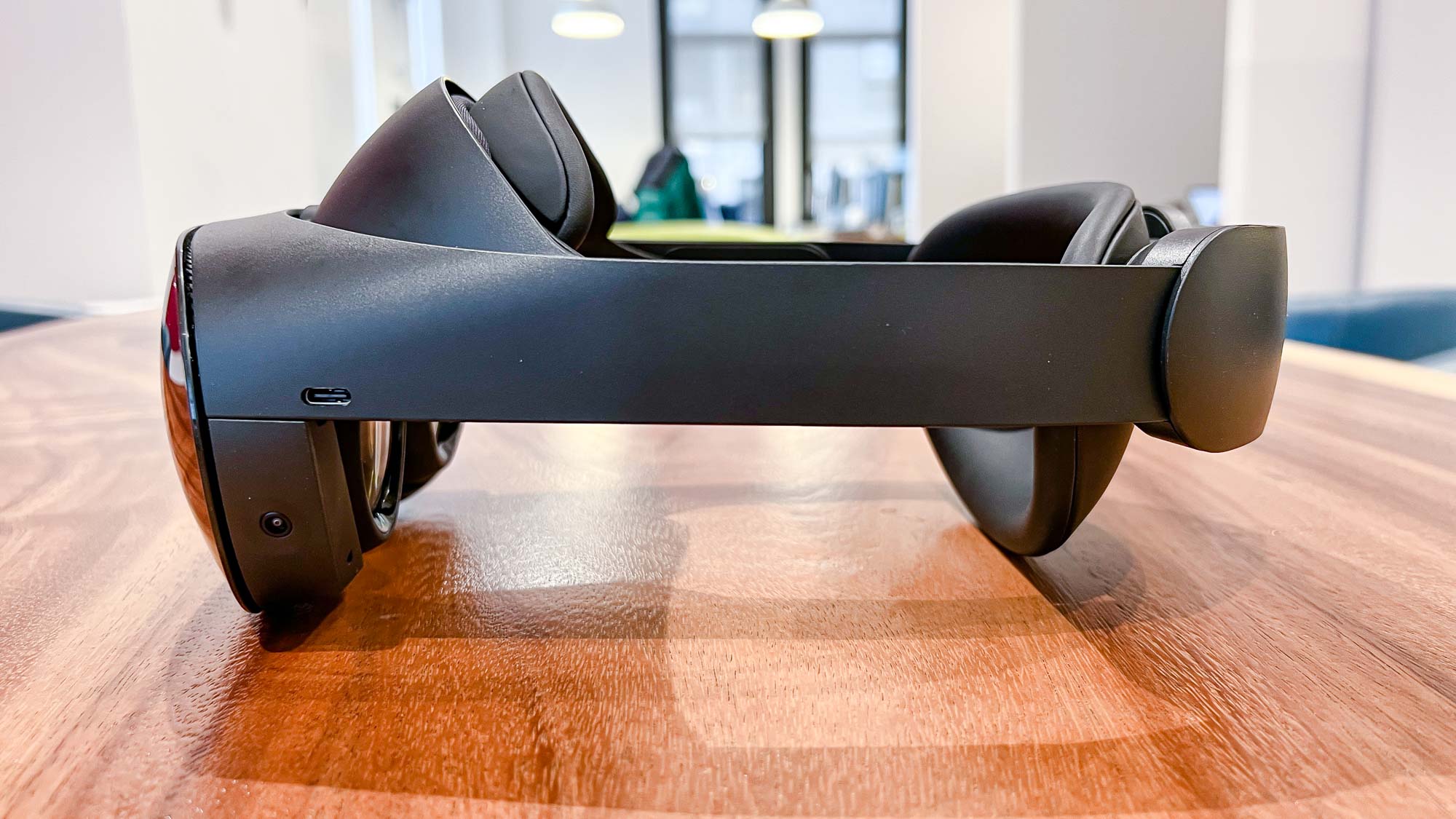
The headset itself has a minimal amount of controls and buttons. The left side of the headset has a headphone jack, a USB-C port and a power button. It also has two dials, with one on the front lens and another on the battery pack.
The front dial allows you to adjust the distance between your eyes and the screen between 2.16 and 2.95 inches, while the back dial is used for tightening and loosening the device around your head. The dials are somewhat rigid but they aren’t too hard to turn, especially once you’ve gotten them to move. I imagine frequent use will loosen them up over time.
Meta Quest Pro review: Controllers
- Full 360-degree range of motion
- Interacting with virtual objects feels more genuine
The Metal Quest Pro’s controllers not only feel good to hold, but they’re also more intuitive to use compared to the company’s previous VR controllers. Instead of relying on the headset for tracking, the controllers have self-tracking technology. Because of that, they have full 360-degree range of motion. The controllers are always tracked, even if you put your hands behind you. This works well when you’re using them and also makes hand movements from others appear more realistic.
Another cool feature is TruTouch Haptics, which gives you better feedback. If you pinch or squeeze a virtual object, you’ll feel resistance on the buttons you’re pressing. Squeezing a rubber ball feels natural, for example. It’s obviously not the same as performing the same action in real life, but it’s a good simulation.
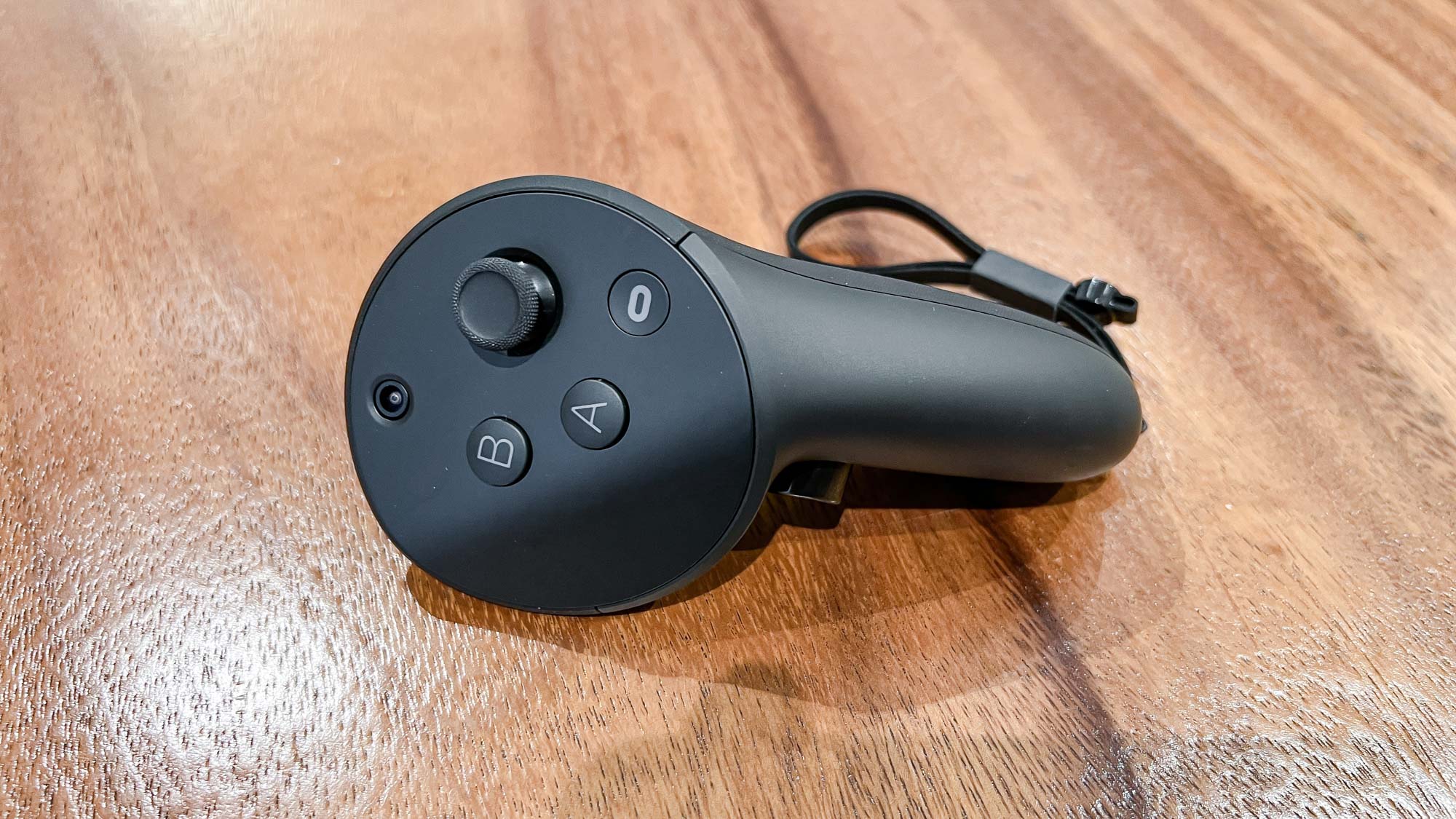
Thanks to the attachable stylus tips, you can use the controllers to write on virtual surfaces. Despite the controllers being much bulkier than a standard pen or pencil, writing feels pretty natural. You can feel resistance when writing on objects like a whiteboard or wall, with each producing different levels of vibration to simulate the real-life act. With that said, it took me a while to get used to writing in VR. But that’s mostly because I needed to figure out the correct angle to place my hand so it would register its movements. Working in VR in general is weird, but writing worked better than I thought it would.
I’m not exactly a fan of VR controllers because they seem clumsy and inelegant. With that said, I find the Quest Pro controllers very intuitive to use, especially after you get used to them. Because of their ease of use, I almost forgot I was using them, which is the highest compliment I can give controllers of any kind.
Meta Quest Pro review: Setting up
- Setup process takes minutes
- No need to calibrate headset
Calibrating older VR headsets used to be a pain, but that isn't the case with the Quest Pro. Setting it up is a relatively straightforward process that takes only minutes.
After turning the headset on, you’ll receive a series of simple-to-follow tutorials that demonstrate how to properly adjust the headset. Before you know it, you’re ready to hop into some VR worlds.
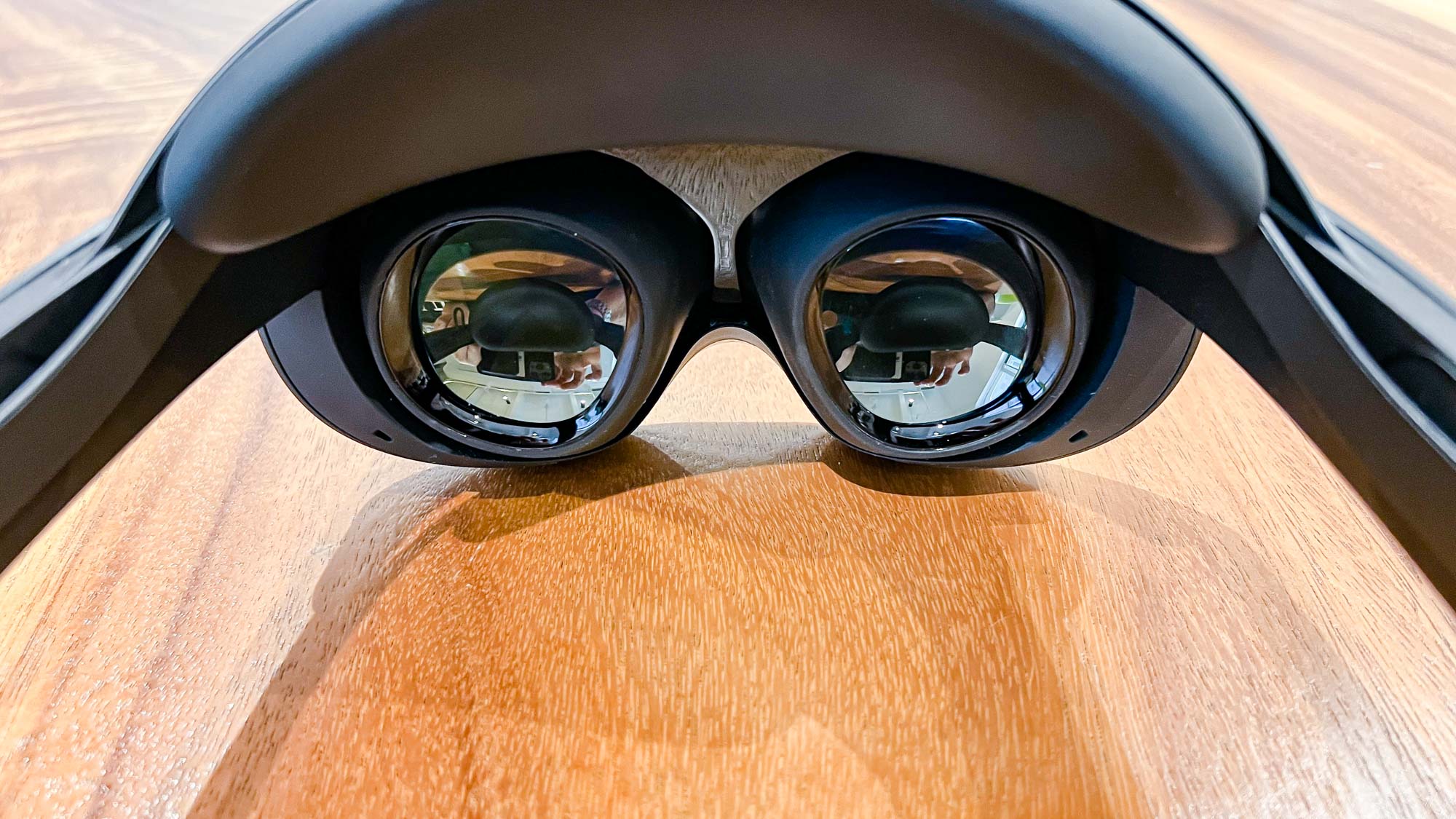
Because of the Quest Pro’s open-sided design that allows you to see your environment while wearing the headset, you can use the device almost anywhere you want without worrying too much about accidentally bumping into anything. This is different from the Quest 2, which recommended you be in a 6.5 x 6.5-foot space so that you’re free to walk around in VR. The Quest Pro simply tells you to be sure you have enough room to move your arms. This specific part of the setup process takes seconds.
You’ll also need to connect to the internet via Wi-Fi 6E. A virtual window listing available networks pops up and you can type in your network’s password via a virtual keyboard. This part is also easy and seamless.
Meta Quest Pro review: Performance
- Powered by the Snapdragon XR2+ platform
- Fast and responsive
The Meta Quest Pro runs on the Snapdragon XR2+ platform, which Meta claims makes the Quest Pro 50% faster than the Quest 2. It also packs 12GB of RAM and 256GB of storage.

I tried a variety of games and apps during my testing and found them fairly responsive. I say “fairly” because there’s still some level of awkwardness when using VR applications. If your hands tend to shake, it could be difficult to click on menu buttons or manipulate VR objects. I played a bit of a game called The Last Clockwinder, and it was sometimes difficult to grab hold of objects or pull levers. But I wouldn’t blame performance for this since, as I said, playing in VR takes some adjustment.
Meta Quest Pro review: Audio
- Loud and crisp audio
- Bass is almost nonexistent
The Meta Quest Pro has built-in speakers that deliver crisp, loud audio. It also supports positional audio, which helps you feel more immersed by making it seem as though you hear sounds coming from different directions and distances. For example, if you’re in a virtual meeting and someone walks behind you, it’ll actually sound like they’re behind you. Virtual participants that are closer to you will sound louder than those who are further away. It's impressive stuff.
But as much as I appreciate the Quest Pro’s spatial audio, I wish it didn’t sound so thin. Yes, the audio is clear, but there’s next to no bass. Thankfully, there’s a headphone jack you can use to plug in your own cans if the thin sound quality gets grating.
Meta Quest Pro review: Battery life
- Lasts between 2-3 hours
- Takes 2 hours to charge
Meta says the Quest Pro can last between two to three hours, depending on what you’re doing. In my own testing, I found this to be accurate since I had to charge the device after roughly two hours of playing games and trying various apps.
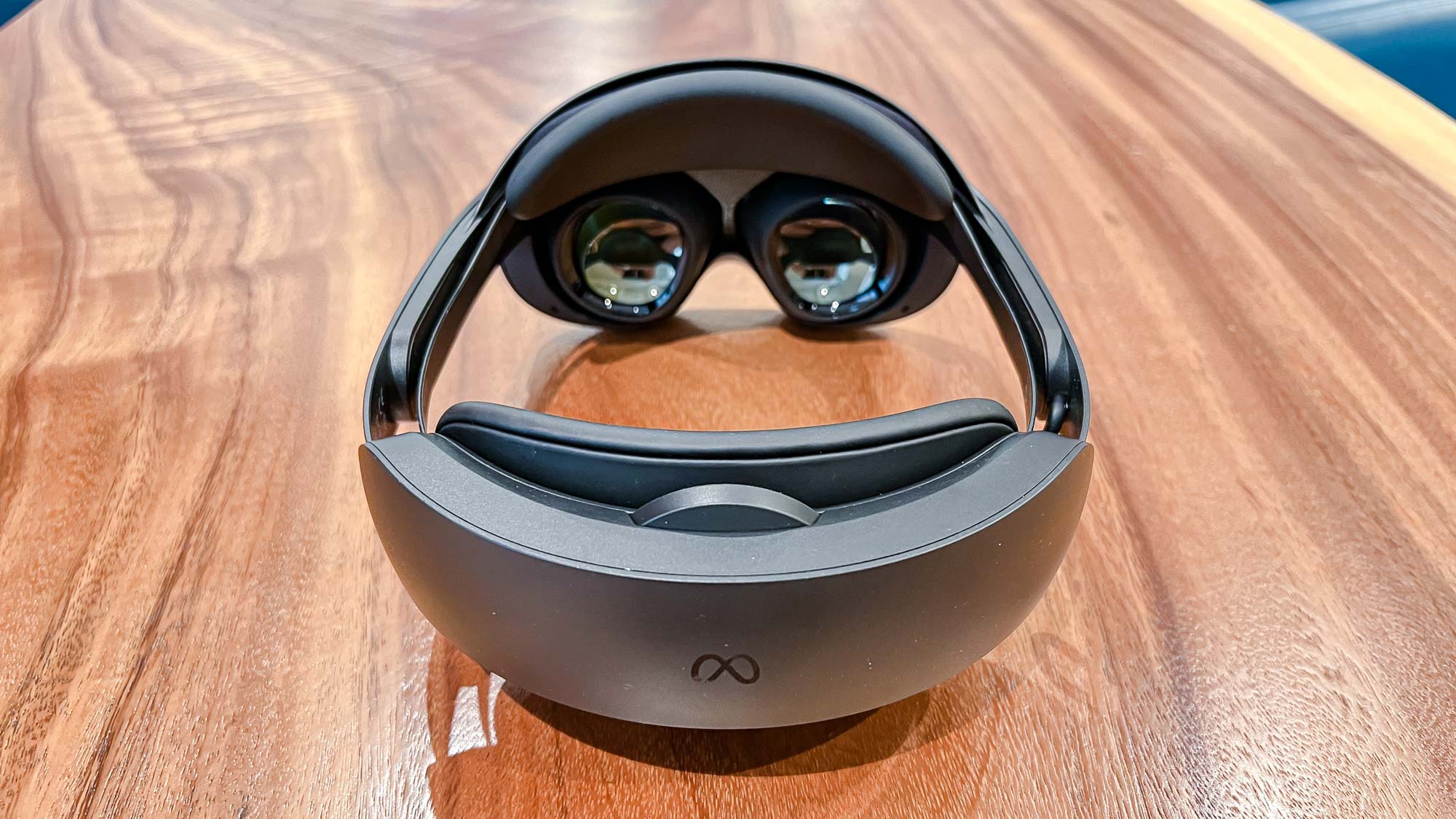
You can check the headset’s battery life at any time in the Meta Quest App settings or in VR via the Home Menu. If you need the headset to last longer, you can connect the included 6.5-foot power cable to keep it charged. Doing so effectively makes this a wired device, but the option is there and appreciated.
It takes about two hours to fully charge the Quest Pro, so expect it to spend as much time charging as it does in use.
Meta Quest Pro review: Open periphery
- Outer cameras lets you see your real-world surroundings
- Image quality is somewhat grainy
One of my biggest issues with wearing a VR headset is how it makes you feel isolated from your surroundings. Granted, I understand why full immersion is important, especially when playing certain games, but I always like having some sense of my environment. This is why I typically don’t use headphones when watching TV or when gaming. Thankfully, the Quest Pro’s open-sided design allows me to see my surroundings, even with the headset on.
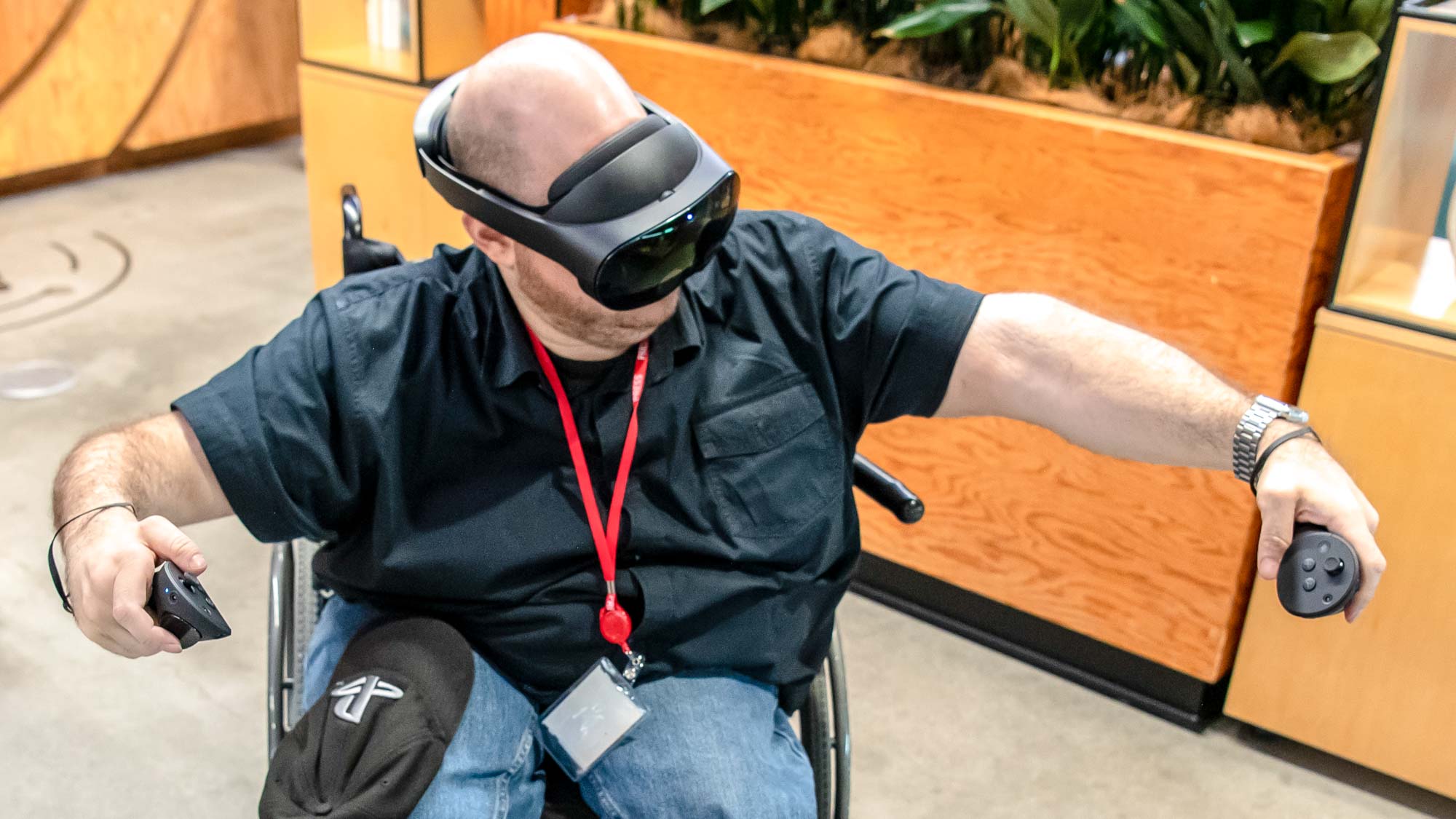
The cameras built into the Meta Quest Pro allow it to offer what's essentially an advanced version of the Quest 2’s Passthrough mode. Instead of grainy black & white video of what's around you, you can use the headset's outer cameras to see a relatively high-res color version of your environment whenever you want. That isn’t to say the image quality is superb (it's still somewhat grainy) but it’s superior to the Quest 2’s Passthrough mode.
This is one of the Quest Pro’s main selling points, especially when it comes to productivity. For instance, I’m able to see my laptop or PC keyboard in the real world while interacting with virtual elements. You can be in a VR environment while being present in the real world, which is pretty awesome.
Meta Quest Pro review: Verdict
There’s no denying that Meta Quest Pro is an impressive piece of technology. It does a good job of mimicking participants’ facial expressions and hand gestures to make talking to someone’s avatar feel more natural. Its spatial audio also serves to make you feel more immersed in an environment — whether it’s a virtual office or fantasy realm. The built-in color passthrough cameras ensure you’re aware of your real-world surroundings. All of this is extremely impressive.
But despite its virtues, I’m not sure if folks who collaborate with others online will find the Quest Pro essential. Yes, the technology is cool, but if you need to meet with your team, using tried-and-tested applications like Google Meet or Zoom is more efficient. Plus, with the Meta Quest 3 offering a lot of this capability at a lower price, it's hard to recommend this to anyone outside of the niche that will take advantage of its specific feature set.

Tony is a computing writer at Tom’s Guide covering laptops, tablets, Windows, and iOS. During his off-hours, Tony enjoys reading comic books, playing video games, reading speculative fiction novels, and spending too much time on X/Twitter. His non-nerdy pursuits involve attending Hard Rock/Heavy Metal concerts and going to NYC bars with friends and colleagues. His work has appeared in publications such as Laptop Mag, PC Mag, and various independent gaming sites.
